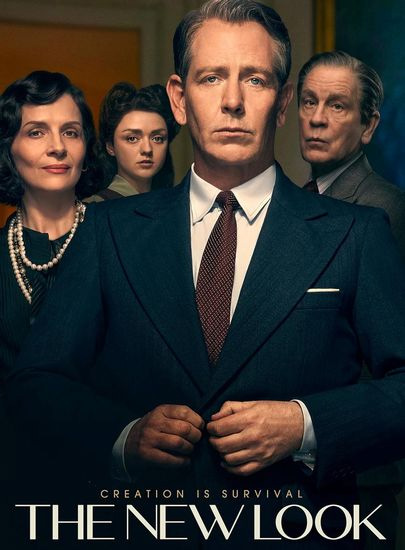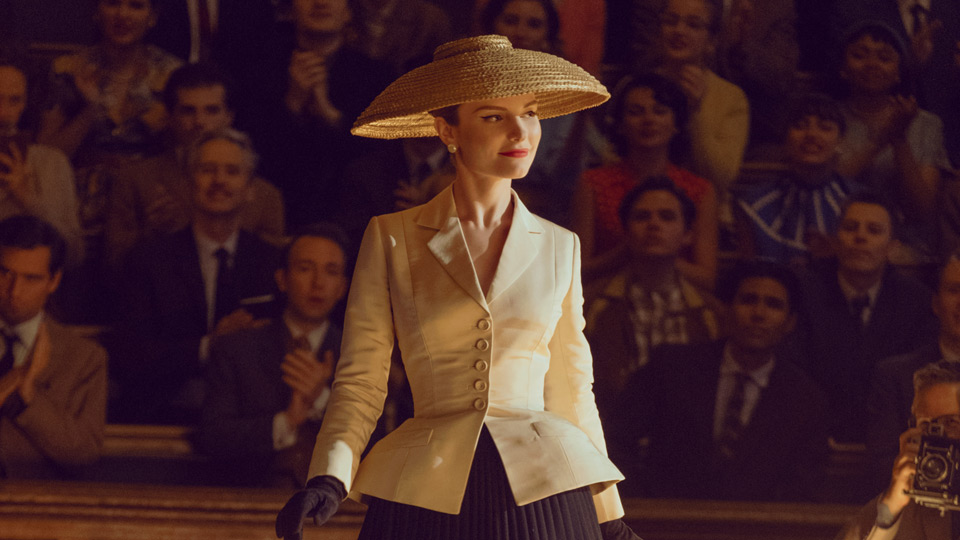You are British but have lived in France for many years. How did you come to be a costume designer?
I had always been interested in design from an early age. I loved painting, sewing... But I didn't know that the profession of costume designer existed. When I was 17, I came to France and met an actor and I started making costumes for the theatre. After that, I joined a dressmaking workshop in Paris. A year later, I went back to London to attend a design school. When I returned to France, I worked in the theatre and shortly afterwards in film, where I fell in love with the atmosphere of the stage and film sets. Having always loved working with materials - whether fabric or paint - I realised that being a costume designer allowed me to work in more disciplines than fashion design.
The New Look is essentially about fashion. What does this type of collaboration mean to you?
When I was offered this project, I thought it was absolutely brilliant. Then I got a bit nervous! (Laughs.) But above all it was exciting, because this series isn't just about Parisian fashion. There's the backdrop of the Occupation, the concentration camps are shown. There are a lot of things that clash visually with fashion shows! And even in the world of fashion, we tell the story of the rivalry between Christian Dior and Coco Chanel, with the idea that each found a way to survive the war while continuing to create.
How did you go about recreating the costumes from the 1940s and 1950s?
First of all, I based my work on the scripts I received. I documented each scene, using what I could find about the period, to give me an idea of the atmosphere. Then I worked on each character. I chose colours and lines. Then I had to work on the fashion shows, which meant painstakingly copying the Dior dresses of the time. Fortunately, Dior gave us access to its archives. We were able to work from small scraps of fabric and drawings from the actual catwalk shows of the time, which have been preserved.
How did your collaboration with Dior go?
Hélène Starkman [head of cultural projects and curator of exhibitions at Christian Dior Couture, editor's note] was with us throughout the production. This collaboration with Dior was essential if we were to succeed in reproducing the dresses from these legendary fashion shows. For example, we were able to consult many period photos of Christian Dior and his sister Catherine. However, I didn't get to see Chanel because it was closed during the war. In fact, there are very few photos of Coco Chanel from that period. Instead, I was inspired by the images we have of her before and after the war. I imagined Coco in opposition to Dior, who was looking for comfortable chic. I also wanted to bring in a more masculine touch. It was more a work of inspiration.
Did you feel any pressure representing French luxury?
It was more like a dream! It was great to be able to understand the structure of these dresses, which sculpt women's bodies. You have to understand that a lot of work goes into the design to achieve this result. Christian Dior thought of his dresses as architecture. On the days we shot the fashion shows, we all had tears in our eyes. It was so magical to relive those moments, the emotion was so strong…
How did you work with the director and showrunner, Todd Kessler?
We had a lot of discussions, starting with the number of dresses we really needed. There are 92 dresses in the original shows and we couldn't reproduce all of them, for reasons of time and budget. We chose 12 dresses for each show, which is already a lot of work.
You had a huge number of costumes to manage. How did you manage it?
By following an almost military rhythm! (Laughs.) Everything was perfectly orchestrated. We started by going round the period costume hire companies. Then we very quickly set up production workshops. Because there were dresses, but not only dresses! Even for the extras, there were costumes that we couldn't find and that had to be reproduced, particularly the evening dinner jackets. I had a big workshop as a hub for the main costumes. I then used smaller workshops for the other costumes. As for the catwalk dresses, we made two, and had the others made by Atelier Caraco in Paris [a bespoke design studio that works for the performing arts and haute couture, editor's note]. There were two sewing workshops: one for the costumes for the roles and one for recreating the Dior and Chanel haute couture outfits. In fact, the Dior dresses we reproduced for the series will soon be on display at Dior.

The New Look, 8 episodes, is available from 14 February 2024 on Apple TV+.
Created by Todd A. Kessler
Written by Todd A. Kessler, Matthew Fantaci, Ashlin Halfnight, Dani Vetere, Ning Zhou Directed by Julia Ducournau, Todd A. Kessler, Helen Shaver and Jeremy Podeswa
Starring Ben Mendelsohn, Juliette Binoche, Maisie Williams...
The New Look benefited from the Tax Rebate for International Productions (TRIP)


